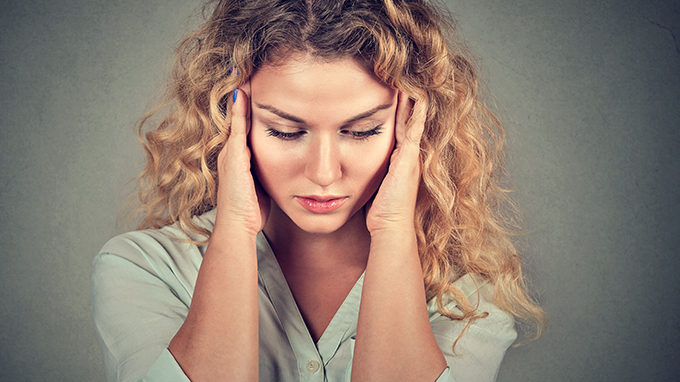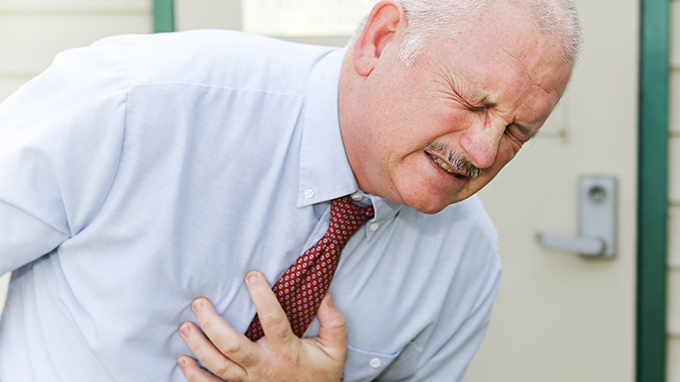Menstruation brings iron deficiency or anemia should be paid attention to
Many people don’t know that menstruation can cause health problems for women. The large amount of menstruation is one of the main reasons that lead to iron deficiency and anemia in women far exceeding men. Menstruation is destined for women of childbearing age to consume more iron, eat more meat, animal liver or blood, choose iron-fortified foods or take iron-containing nutritional supplements if necessary.
Unlike most other nutrients, the human body does not have a channel for the active excretion of iron. Only a small amount of iron is "lost" through the skin, gastrointestinal tract, respiratory tract, and urinary tract mucosal cells. Women are a little special. Menstrual blood also "loses" some iron (hemoglobin in the blood contains iron). For ensuring iron nutrition and avoiding iron deficiency (preventing iron deficiency from causing anemia and other health problems), you only need to replenish these missing iron every day. Dietitians will recommend adult women to consume 20 mg of iron per day. How is the recommendation of 20 mg iron calculated? The calculation process is given below. [Understanding this calculation process, you can understand the conclusion of this article very thoroughly (and even vomiting it). It doesn’t matter if you don’t understand it. Skip the next calculation process and go straight to the conclusion of the fourth paragraph.]
In 1968, Green and other researchers used the radioisotope 55Fe dilution method to determine that adult males lost 0.96 mg of iron per day. Based on this, it was calculated that Chinese women lost 0.82 mg of iron per day (not counting menstruation). , For experts to participate in the study]. The average menstrual flow of adult females of childbearing age in China is 40 ml per month [contains 18.3 mg of iron, attached to the calculation formula for study and training], and the menstrual cycle is calculated based on 28 days. (18.3÷28=0.65). Calculated in this way, the average adult woman loses a total of 1.47 mg of iron per day (0.82+0.65=1.47), which needs to be supplemented through diet. It is not easy to make up the 1.47 milligrams of iron, and it will take another week. Because iron in food cannot be fully absorbed, it can only be absorbed by about 10%. [This proportion of the source text is attached to the post, for the study to participate in research], so the average daily dietary intake of iron for women is 14.7 mg (1.47÷10%=14.7 ). The calculation is not over yet, because considering each person''s need for iron has a certain difference (variation coefficient 15%), some people may need to exceed 14.7 mg, for insurance purposes (guaranteed to meet the vast majority of people) to add 30% (2 Coefficient of variation, 15%×2=30%), that is, the recommended daily intake of iron for adult women is 20 mg (14.7+14.7×30%=19.1, rounded).
The calculation is very complicated and the conclusion is very simple. It is recommended that normal adult women consume 20 mg of iron per day, about 44% (8.8 mg) is to supplement menstrual bleeding (men do not have menstrual blood loss, daily recommended intake of iron 12 mg). Moreover, it is worth noting that this value is calculated for the menstrual volume of 40 ml/month. Many women have more than 40 ml of menstruation. It is necessary to add more iron. All in all, how much iron a woman needs to eat has a lot to do with menstrual flow. The more menstrual flow, the more iron you need to supplement. If the menstrual flow is 80 ml/month, you should ingest 28 mg of iron per day, which is more than 2 men’s iron supplement; if you have more menstruation (it is generally considered that the menstrual flow exceeds 80 ml/month is more menstruation), you need to supplement More iron, far from men.
In fact, menstruation is the main reason for the prevalence of female anemia far exceeding that of men; iron deficiency anemia is an important problem affecting women’s health (leading to women’s lack of physical strength, lack of energy, paleness, weakness, Low immunity, fear of cold, cold, etc.); supplementing iron and blood is a key task for women of childbearing age. The best food sources of iron are meat, animal liver and blood. These foods contain more heme iron, more iron content, high absorption rate, can also promote the absorption of iron (non-heme iron) in other foods, their effect of supplementing iron and blood is far more than jujube, brown sugar, fungus, spinach, longan Such legendary blood supplements are far better than recommended foods such as eggs, milk, soy products, etc. It is a recipe for women of childbearing age to be the best choice. They eat an average of 100 grams per day (including livestock, poultry and fish). If a woman has more menstrual periods, you need to increase meat intake; if a woman of childbearing age eats less meat (such as a strict vegetarian), you need to supplement iron, including the use of iron flour, iron milk powder, plus Iron-fortified foods such as iron soy sauce, or taking iron-containing nutritional supplements; if a woman already has iron-deficiency anemia, she should double her meat (including red meat, animal offal and blood) and take iron supplements.
Related Articles

- Drinking water can prevent heat stroke
- Actually, the hot weather is not the direct cause of heat stroke. Heat stroke is mostly caused by sweating caused by heat. Under the high temperature in summer, the body sweats tens of tim
- 2020-08-03

- Easily smooth out "head down syndrome"
- People engaged in scientific research, editing, writing and other work are prone to neck and shoulder pain due to long-term bow work, commonly known as "head bow syndrome".
- 2020-08-03

- Dietary principles of patients with hyperlipidemia
- The main dietary principle of patients with hyperlipidemia is to control the continued rise of blood lipids and prevent serious cardiovascular and cerebrovascular accidents. In addition to th
- 2020-08-02

- Dietary coup for winter cough
- The winter in the north is quick to say. When the northwest wind blows down the last autumn leaf, the dry winter begins. The most common health problems in winter are upper respiratory trac
- 2020-08-02

- Infectious diseases of children common in spring
- Spring is a period of frequent confluence of cold and warm air. Due to the poor resistance of children, it is very easy to get sick in cold and hot weather. Parents learn to understand thes
- 2020-08-01

- Understand the secret of "cough reflex"
- Many parents see that their child''s cough will be tense. They are always used to link "cough" and "disease" together. This is because parents do not understand why
- 2020-08-01
